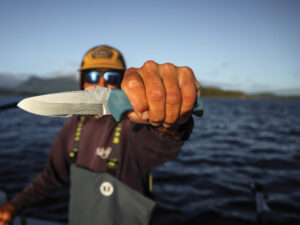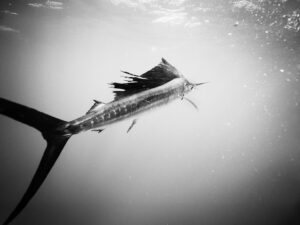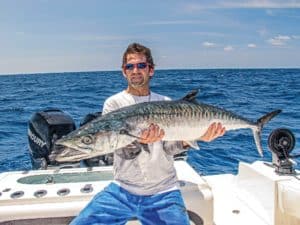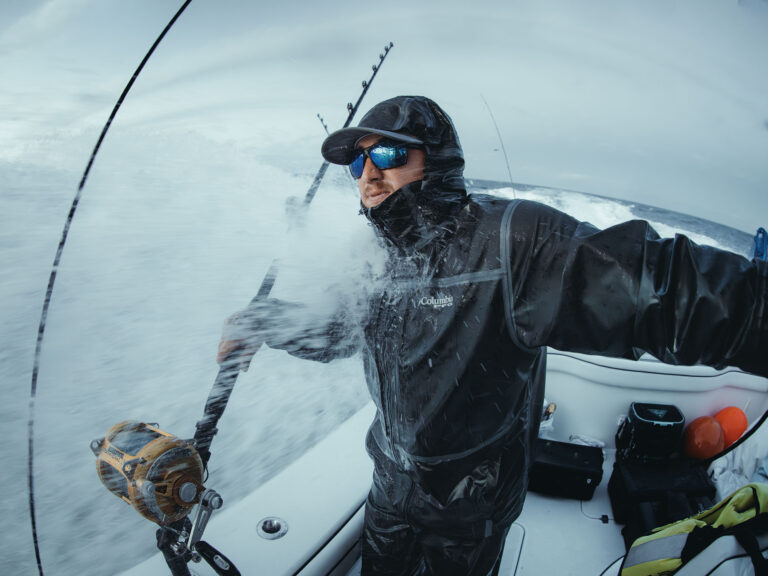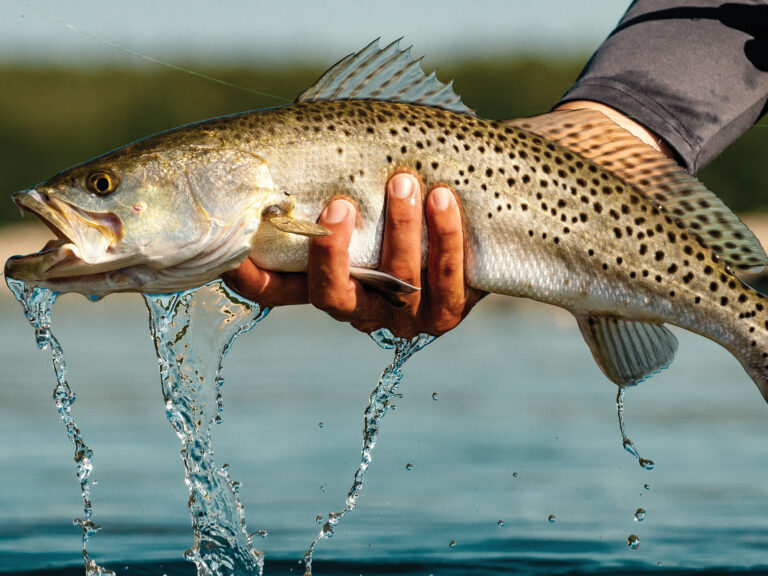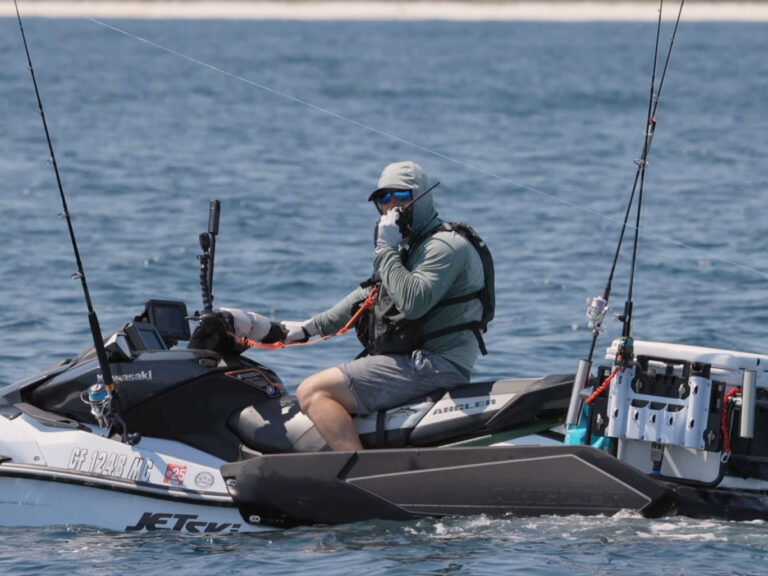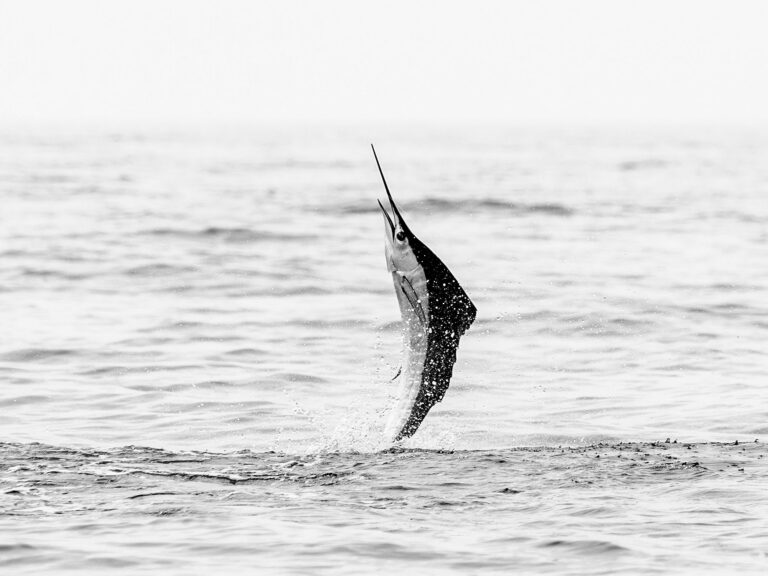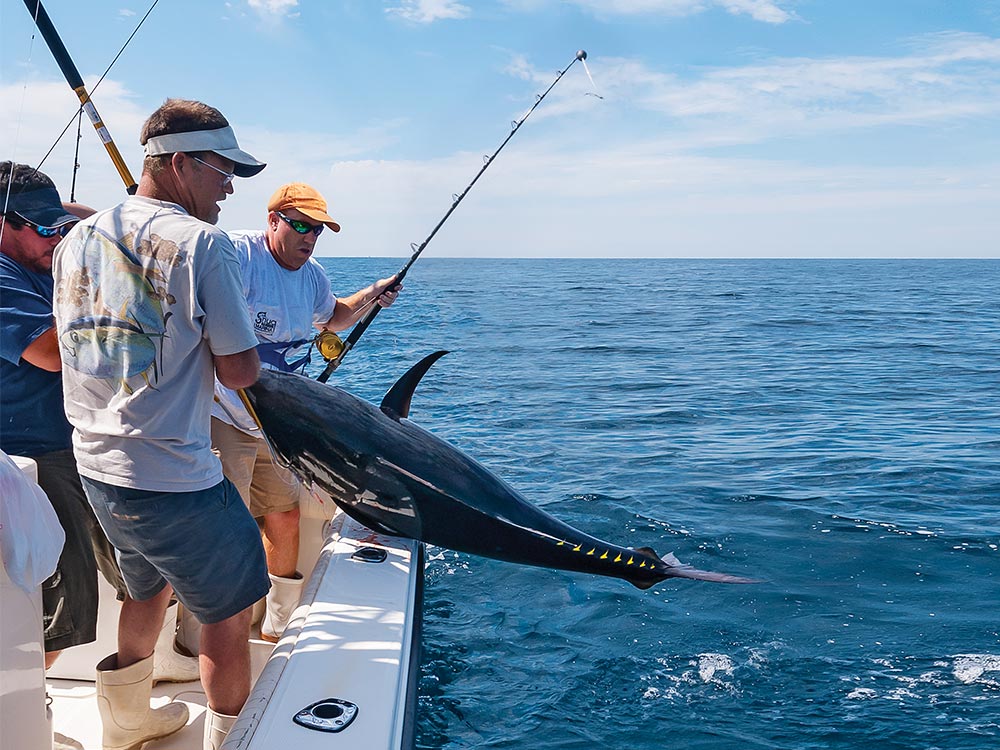
Off New Jersey, New York and Maryland, anglers find tuna 40 to 60 miles out through the summer, then find them hugging the coastline a mile or two off the Jersey shore during the early winter, bluefins of 30 to 300 pounds and yellowfins of 40 to 100 pounds relatively close to port.
Dragging Around
Trolling spreads differ, but most have the potential to produce multiple hookups. Capt. Dave Chieffo of Long Run Charters works New Jersey tuna spots such as Chicken Canyon, Texas Tower, Atlantic Princess and Triple Wrecks, which lie in 180 to 280 feet of water, 45 to 65 miles offshore. Its all about water clarity, contour structure and water temperature, says Chieffo. “Early and late in the season, when the water hovers in the 70- to 75-degree range, bluefins often feed on the surface. When the water temp rises to 77 degrees they go down and we change tactics.”

For tuna feeding on the surface, the trolling spread includes Tuna Birds, squid spreader bars, daisy chains, cedar plugs, and ballyhoo rigged on blue-and-white Ilanders or black-and-purple Joe Shute skirts. The preferred speed is 6½ to 8 knots, but it’s best to throttle down to 5½ to 6½ knots for deeper trolling. Be sure to zigzag and make frequent turns over contour lines to enable the baits to dip in the water column, a presentation tuna find irresistible.
Trolling Spreads
When the water is warm, the clarity off, or there’s heavy boat traffic boat traffic y, bluefins get picky. “We still run a big Tuna Bird up top, along with a spreader or two to create commotion. Then we drop ballyhoo to the depth where the tuna are feeding We determine where the temperature breaks and deploy the downriggers and one ballyhoo, one above it and one below it. We also put the baits way back in the spread, 50 to 60 yards from the transom.”
Dunk the Chunk
Most savvy anglers run 25 to 40 miles to the Mid-Atlantic Bight off Cape May, New Jersey, and Ocean City, Maryland, inshore lumps, like the Hot Dog, Hambone, 19th Fathom or Massey’s Canyon area, where depths fluctuate from 150 to 180 feet along the 20-fathom line.
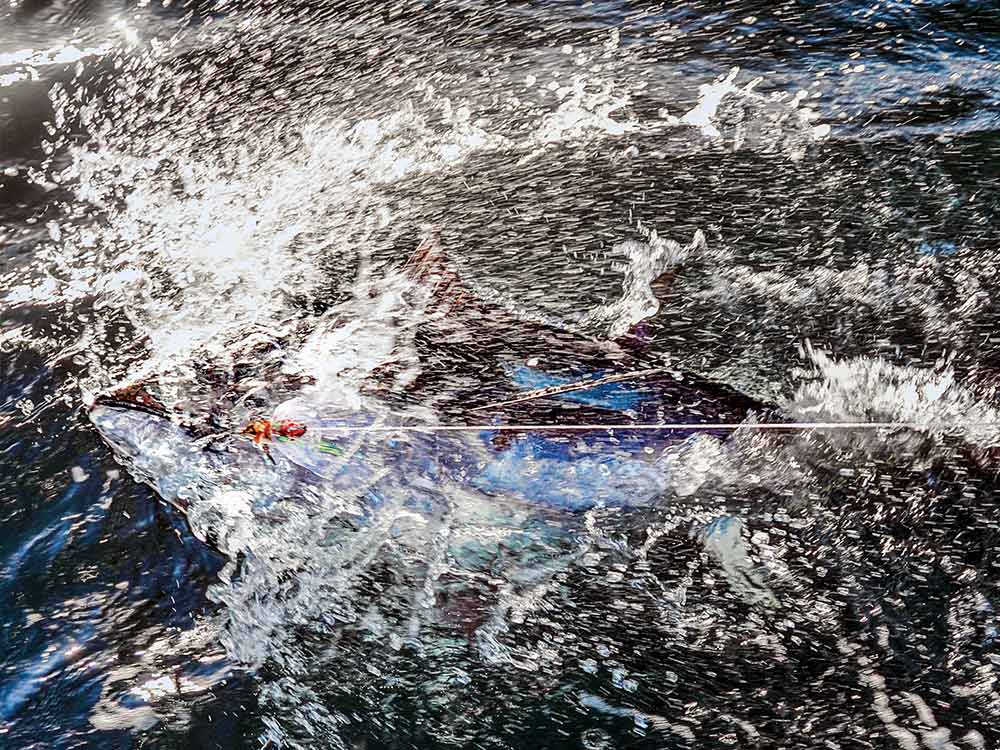
And according to Capt. Dave DeGennaro of Hi-Flier, the game is chunking. “We start in 100 feet of water, and drift over valleys and high spots, then set anchor and start our chum slick.”
DeGennaro doles out butterfish and sardine chunks while setting out a four-rod spread, with baits at of 30, 60 and 80 feet, and one a few cranks off the bottom closes to the boat.
“We bait with butterfish, whole sardines and squid, but if we can get live spot, that’s best,” says DeGennaro, who spools his reels with 40-pound mono, ties it to a 150-pound ball-bearing swivel, then a 7-foot section of 30- to 40-pound fluorocarbon leader and a 3/0 to 6/0 live-bait tuna J hook, matched to the bait.
“The key is to hide the hook , inserting it into the mouth of the bait, pulling it three-quarters of the way out the gills, then turning it 180 degrees to re-enter the bait and push the point just enough to barely pierce the other sideso the gill plate hides the hook.” If you want the baits to go deeper, slide a 4- to 8-ounce egg sinker above the swivel, or loop a rubber band on the line to attach a bank sinker.
Pop or Jig
Tuna reaction strikes on poppers are knee-buckling. In the summer months, bluefins and yellowfins can be anywhere from 40 to 65 miles off New Jersey, where bait is plentiful and water temperature is optimal. But come November and December, the action can be as close as a mile off the beach. “When deciding to pop for tuna, we first look for signs of life, like skipjacks, albies, whales and dolphin,” says Capt. John Luchka of Long Run Charters. “We cast in front of porpoises.” If mark sand eels, we drift and seed the surroundings with herring and sardine chunks.”
Rods need serious backbone, and the a drag system with 35 to 60 pounds of stopping power. He spools with 65-pound Spiderwire Camo Blue braid, then a 6-foot section of 80-pound fluorocarbon leader via a Slim Beauty knot, and attaches a 2½- to 5-ounce Yo-Zuri Bull Popper to the leader with an uni-knot or 300-pound TA clip. “Cast as far as you can, and retrieve the lure with a pop-and-pause technique, chugging up water, then settling down.”

“If the water is in that 77- to 80-degree range or higher, or if it’s turbid, we jig,” explains Luchka, “with thin-profiled jigs like Ava or Butterfly jigs on the same leader, dropping the jig to the seafloor and then jigging with sweeping strokes, up 20 feet after a few swings and repeating that process.”
Terrific bluefin and yellowfin fisheries have blossomed closer to that includes trolling, chunking and popping is bound to deliver action-filled days and fish boxes chock full of tuna.
SWS Planner for Bluefin Tuna and Yellowfin Tuna
Where: New Jersey, New York and Maryland midshore grounds
When: June through December; July through October for peak action

Expert Captains
Captains John Luchka and Dave Chieffo
Long Run Charters
Point Pleasant, New Jersey
longrunfishingcharters.com
Capt. Dave DeGennaro
Hi-Flier
Barnegat, New Jersey
hiflier.com
SWS Tackle Box for Bluefin Tuna and Yellowfin Tuna
• Rod: Penn Carnage CARBWII medium-heavy, 51⁄2- to 6-foot, 50- to 80-class heavy stand-up rods
• Reel: Shimano Stella 20000, Van Staal VSB250/VM275, Shimano Tiagra 50W
• Lures: For casting: Shimano Orca, Williamson Popper Pro, Yo-Zuri Bull Popper, Yo-Zuri Slider; for jigging: Williamson Benthos jigs, Shimano Butterfly jigs; for trolling: Reel Seat squid spreader bars, Ilander lures, Joe Shute skirts on ballyhoo, daisy chains, cedar plugs

• Line: 65- to 80-pound braid, 40- to 100-pound fluorocarbon leader
• Hooks: 3/0 to 6/0 Gamakatsu live-bait tuna hooks, or equivalent J-style hooks
Fast Facts for Success
• Mull and Troll: Check the water temp and clarity to figure out the appropriate makeup and depth of your tuna trolling spread.
• Find the Bait: Tuna are bound to be where forage is abundant, as long as the water temperature is within the desired range.
• Chunk or Cast: If an area looks good, but you don’t see tuna feeding, chum and chunk. Once tuna are visible, switch to casting lures.
Once you catch some yellowfin tuna, try this recipe for a delicious meal.


